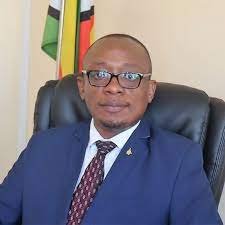…. As government fails to pay BEAM fees for 2 years
By Meditation Mposi
Government has, for two years, failed to disburse funds to schools towards payment of the Basic Education Assistance Module (BEAM) fees after the programme was reintroduced, a development that has left many schools struggling.
While several school heads confirmed the issue, efforts to get a comment from the Minister of Public Service July Moyo and the Permanent Secretary Simon Masanga were futile as they were not picking up their phones, until the time of publishing. Masanga did not respond to WhatsApp and direct text messages sent on his number, despite the message indicating that it had been delivered.
Director for Communications in the Ministry of Education Taungana Ndoro confirmed the sad predicament of schools, saying the ministry was trying to engage relevant stakeholders, even though the programme was under the Ministry of Public Service, Labor and Social Welfare.
“We are aware of the situation, but unfortunately the programme is under the Ministry of Public Service. However, some schools received part of the funds this year,” said Ndoro.
Zaka North legislator Ophias Murambiwa who chairs the Parliamentary Portfolio Committee on Primary and Secondary Education said parliament was aware of the sad development, promising to look into the matter to find a lasting solution to the challenge.
“We had a joint tour of schools across the country with the Ministry of Primary and Secondary Education to ascertain the challenges affecting schools and learning. We noted several challenges and the BEAM issue was topical.
“We are going to call the Ministers of Primary and Secondary Education, Public Service, Labor and Social Welfare and Finance and Economic Development over the matter. We want to find common ground and a lasting solution to the challenge,” said Murambiwa.
School heads who spoke to TellZim News said schools especially those in rural areas were financially struggling, since a sizeable number of learners were on BEAM, with those who are not on the programme reluctant to pay fees as schools are not allowed to send away learners for non-payment of school fees.
School heads who spoke this publication on condition of anonymity said a programme which was supposed to be beneficial to both vulnerable learners and schools was becoming a burden to them, urging government to simply declare free education for all.
“Last year we had 63 learners out of 160 on BEAM. However, of the hundred who were not on the programme, less than 40 learners could afford to pay at least half of the fees. Total fees per term is US$30, which means last year the fees we received was less than US$2 000.
“In this case, what development do you think a school can register with such an amount per year? We urge the government to meet its end of the bargain or abandon the programme if they can’t afford it. Another option is to simply declare free education for all because very few learners are paying,” said the head.
Another head said the school had 170 learners and 55 were on BEAM, but because government was yet to pay the fees, the school was left on its knees as the remainder were also not paying.
“We cannot even afford to pay sport affiliation fees and even sending learners for sports is difficult. It is our appeal that the government pays up so that we can finish projects and start new ones. Parents are now accusing us of not developing the schools whereas it’s not our problem,” said the head.
Another head from Masvingo District said the school had 120 learners out of 350 in 2023 and 117 out of 355 leaners in 2024 on BEAM with a fees structure of US$50 per term.
“The government owes the school about US$18 000 for 2023 fees alone and that amount is so significant for our school. We can do lot of development but currently, we are not doing anything because the little we are getting from the few who are paying is going towards the day-to-day running of the school,” said the head.
The heads lamented the criterion used to select beneficiaries, as well as the timing of selection and payment of the fees when government decided to pay.
“Selection of BEAM beneficiaries is done from mid-term first term or even towards the end of the term. This results in some children starting school mid-term or beginning of the second term.
“The guidelines on BEAM selection are not clear; some communities allocate themselves beneficiaries following a quota system. That means every village head within the school catchment area brings forward his/ her prospective beneficiaries and that promotes corruption.
“BEAM funds are paid, if ever they come at all, in valueless local currency. To cite an example, in 2022 our fees were RTGS8000/ US$40 and if they come now, it’s less than a dollar per child. They are either paid very late or are not paid at all,” said the school head.
Another head said the selection of beneficiaries was done at primary schools, which affect secondary schools, exposing the programme to being overtaken by politicians.
“Selection of BEAM beneficiaries for secondary schools is done at primary schools and very often without representation of secondary schools. This inconveniences the secondary schools.
“BEAM Selection Committees tend to be partisan depending on the personality or professionalism of the local ward councilor who presides over the selection process itself,” said the head.
Another one said the government approach to BEAM hurt schools, because the blame would be laid on the heads who are forced to clean the mess, at the same time not being allowed to send learners away to bring fees for school progression.
“The government’s haphazard and partisan approach to the BEAM issue is impacting negatively on the way schools operate thereby hindering development. The government often resorts to blaming school heads when school development plans are derailed or ground to a halt.
“Arrogance by the government results in the same problems being repeated year after year because it does not empathize with school heads whom they force to clean up the mess they would have created. They deliberately set school administrations on a collision course with communities and that is really bad,” said the head.
Another head said government should stop threatening school heads who send learners home to collect fees and yet its school heads who should threaten government for failing to pay fees.
The heads concurred that if BEAM continued then the government was fast-tracking destruction of the once vibrant education system.
They further said the government was supposed to declare free education for all if it cannot continue paying and must be reminded there was urgent need for constructive engagement of all stakeholders, particularly school heads, who know what’s required in schools as the bad habit of dictating from the comfort of their offices was destroying the country’s future.
BEAM was established in 2001 by the government of Zimbabwe as part of the Enhanced Social Protection Programme (ESPP) the objective was to provide basic education to everyone in Zimbabwe including students who could not afford school fees such as orphans and vulnerable children.
Since its introduction, the number of beneficiaries has varied depending on the year as well as selection criterion, and currently, it is supposed to benefit a total of 1 515 047 learners.
In February this year Masanga was quoted saying the government had cleared arrears for 2022 and was left with 2023 and 2024, with an allocation of ZW$808 087 608 000 for the two years.







